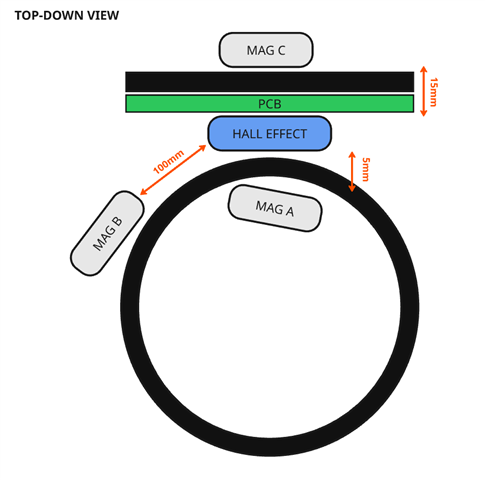Other Parts Discussed in Thread: TMAG5273, TMAG5170, TMAG3001
Tool/software:
I’m looking to source a Hall Effect sensor that can detect combinations of multiple magnets at different positions (not just perpendicular to the sensor). Please see attached for a high-level diagram describing the application.
Is it possible to use a single hall effect sensor to detect whether different combinations of multiple magnets are in certain positions based on the measured total magnetic field strength? For example, based on the diagram, some scenarios I am looking to track are:
- MAG A is present, MAG B and MAG C are absent
- MAG B and MAG C are present, MAG A is absent
- MAG C is present, MAG A and MAG B are absent
Sensitivity is also a concern, as some magnets may be relatively far from the hall effect sensor or behind material layers as denoted in the drawing. The surface fields of the magnets are each around 4,000 Gauss, though some may change in the final design. Current draw is another consideration – ideally the sensor would be lower power or have a low-power mode.
From some preliminary research, I found TMAG5170-Q1, TMAG5273, and TMAG5173-Q1. Please let me know if there are any sensors that may be viable for this application or if you have any questions.


